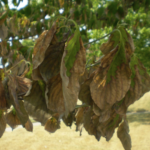Essential Equipment for Tree Work: Understanding the Tools Arborists Use
Tree work involves a variety of tasks, from pruning and tree removal to tree health assessments and planting. To accomplish these tasks safely and efficiently, arborists rely on specialized equipment designed for the various challenges of working with trees. Keep in mind, not all tree services offer every type of service and some equipment may not be needed or used for every job. Let’s explore the essential equipment used for tree work and understand why each tool is vital for tree care.
Chainsaws:
Chainsaws are the workhorses of tree care. They are used for removing branches, limbs, and even entire trees. Arborists choose chainsaws based on the tree’s size and the job’s complexity. Modern chainsaws are designed to be lightweight and powerful, allowing arborists to work safely from heights and maneuver through dense foliage.
Climbing Gear:
For tasks like tree pruning or removal, arborists often need to ascend into the tree’s canopy. Climbing gear includes harnesses, ropes, carabiners, and ascenders, enabling arborists to access every part of the tree safely. Climbing gear is essential for arborists to reach the right spots for pruning, thinning, or securing heavy branches.
Aerial Lifts and Cherry Pickers:
For tall trees or those with challenging access, aerial lifts or cherry pickers can be used. These elevated platforms provide a stable and safe working environment for arborists to reach high branches. Aerial lifts allow for precise positioning and are especially useful for large-scale tree maintenance projects.
Wood Chippers:
Wood chippers are used to turn tree branches and limbs into wood chips or mulch. After pruning or tree removal, chipping the debris helps with disposal and recycling. Wood chips can be repurposed as mulch for gardens or as organic material for erosion control.
Stump Grinders:
After tree removal, stumps are often left behind. Stump grinders are specialized machines that grind down the stump below ground level, removing the unsightly remains. This process allows for smoother landscaping and prevents the stump from regenerating.
Pole Saws and Pruners:
For smaller pruning tasks or branches at lower heights, pole saws and pruners are employed. These tools have an extendable pole with a saw or pruning blade attached, enabling arborists to reach higher branches without the need for climbing.
Grapple Truck:
A grapple truck is a powerful vehicle equipped with a large mechanical arm, called a grapple, used to lift and move heavy tree debris. Arborists use grapple trucks to handle large logs, branches, and other tree remnants during tree removal or storm cleanup. This equipment streamlines the process of clearing tree debris, making it much more efficient and safe.
Plant Health Care Equipment:
To assess tree health and diagnose issues, arborists may use instruments like Resistograph or sonic tomography to evaluate the tree’s internal condition without causing harm. Additionally, soil probes help assess soil health and moisture levels, essential for maintaining tree vitality.
Safety Equipment:
Safety is a top priority in tree work. Arborists use personal protective equipment (PPE) like helmets, eye and ear protection, gloves, and chaps to safeguard against potential hazards like falling branches or debris.
In conclusion, tree work requires a range of specialized equipment to ensure safe and effective tree care. Chainsaws, climbing gear, aerial lifts, wood chippers, stump grinders, pole saws, pruners, grapple trucks, cranes, plant health care instruments, and safety gear all play crucial roles in the process. By using the right equipment, arborists can carry out tree work with precision, ensuring the health, safety, and beauty of our trees. If you ever have questions about the type of equipment used, or how it may affect your property you can ask your local tree service.




